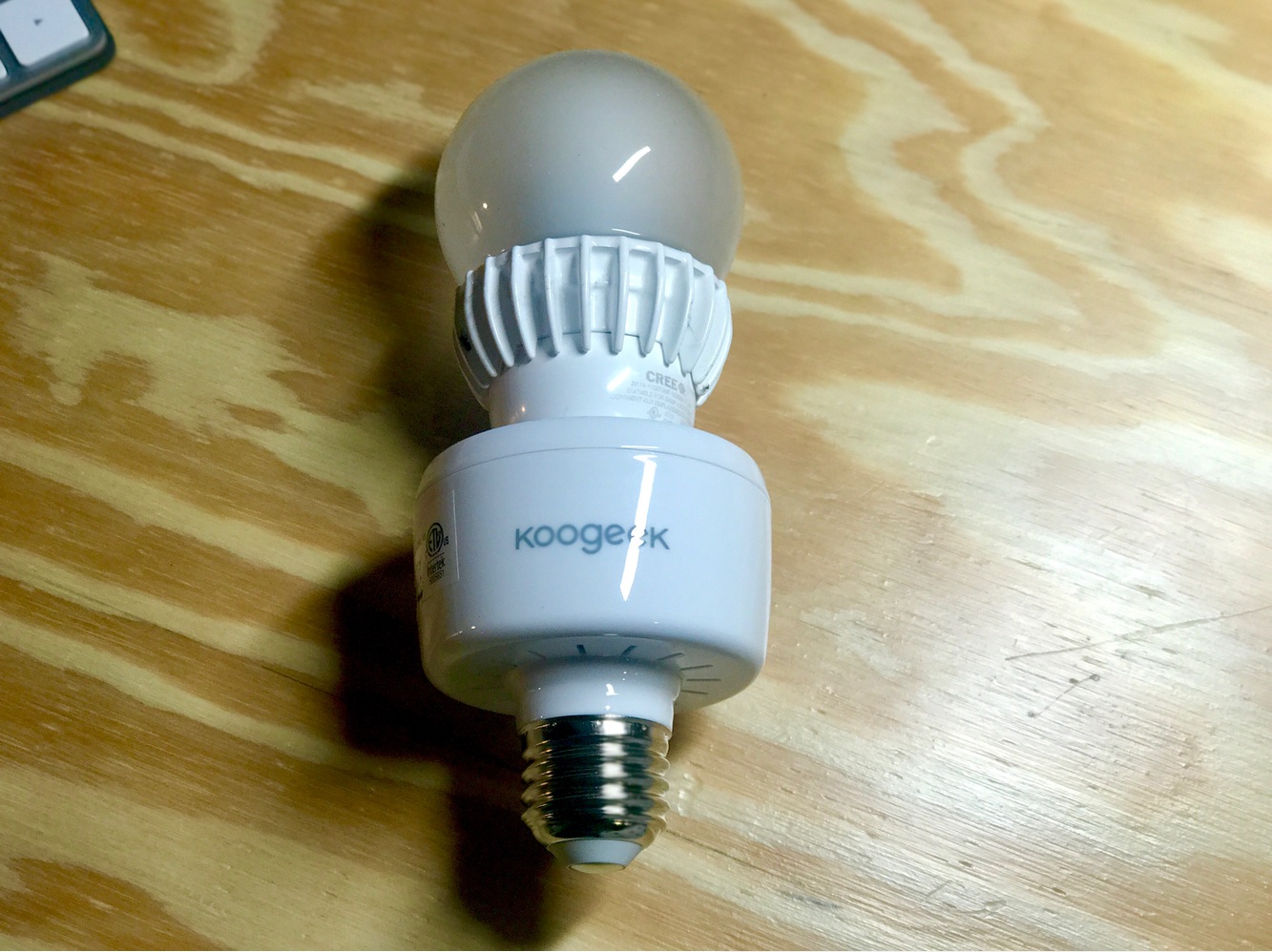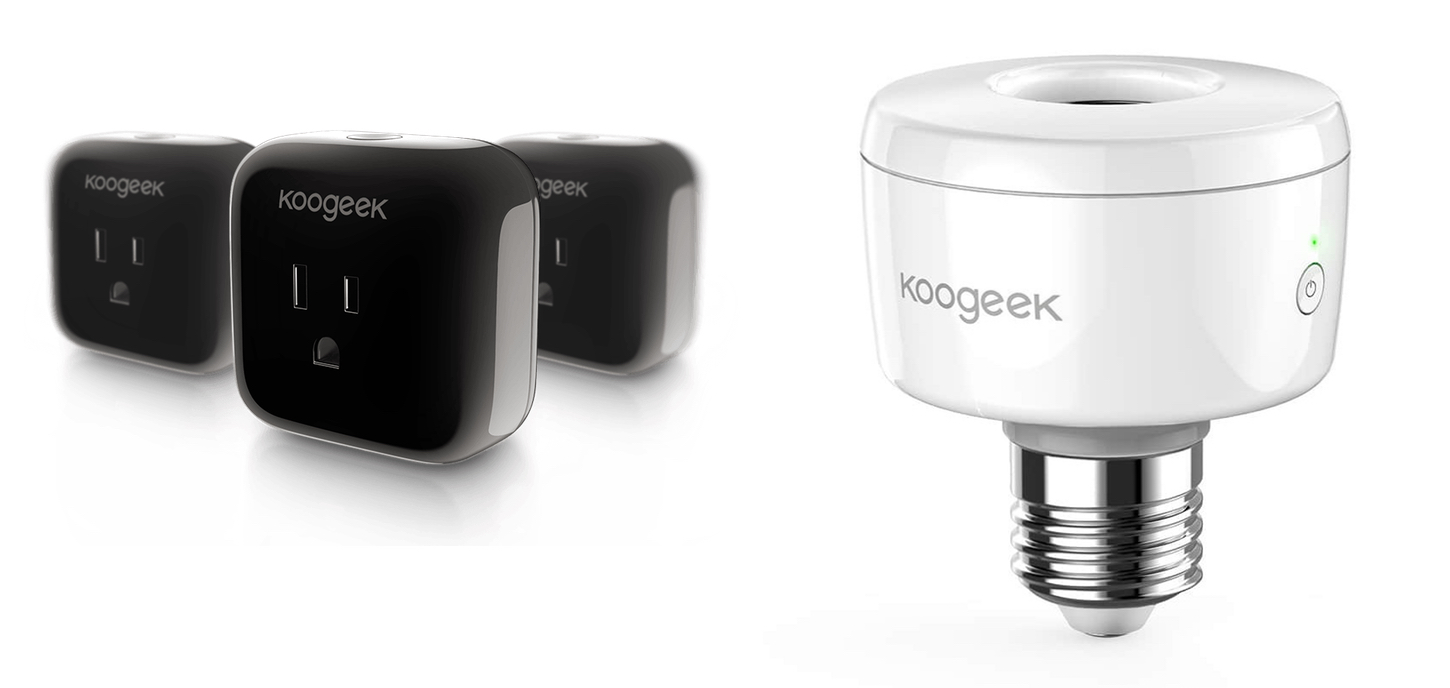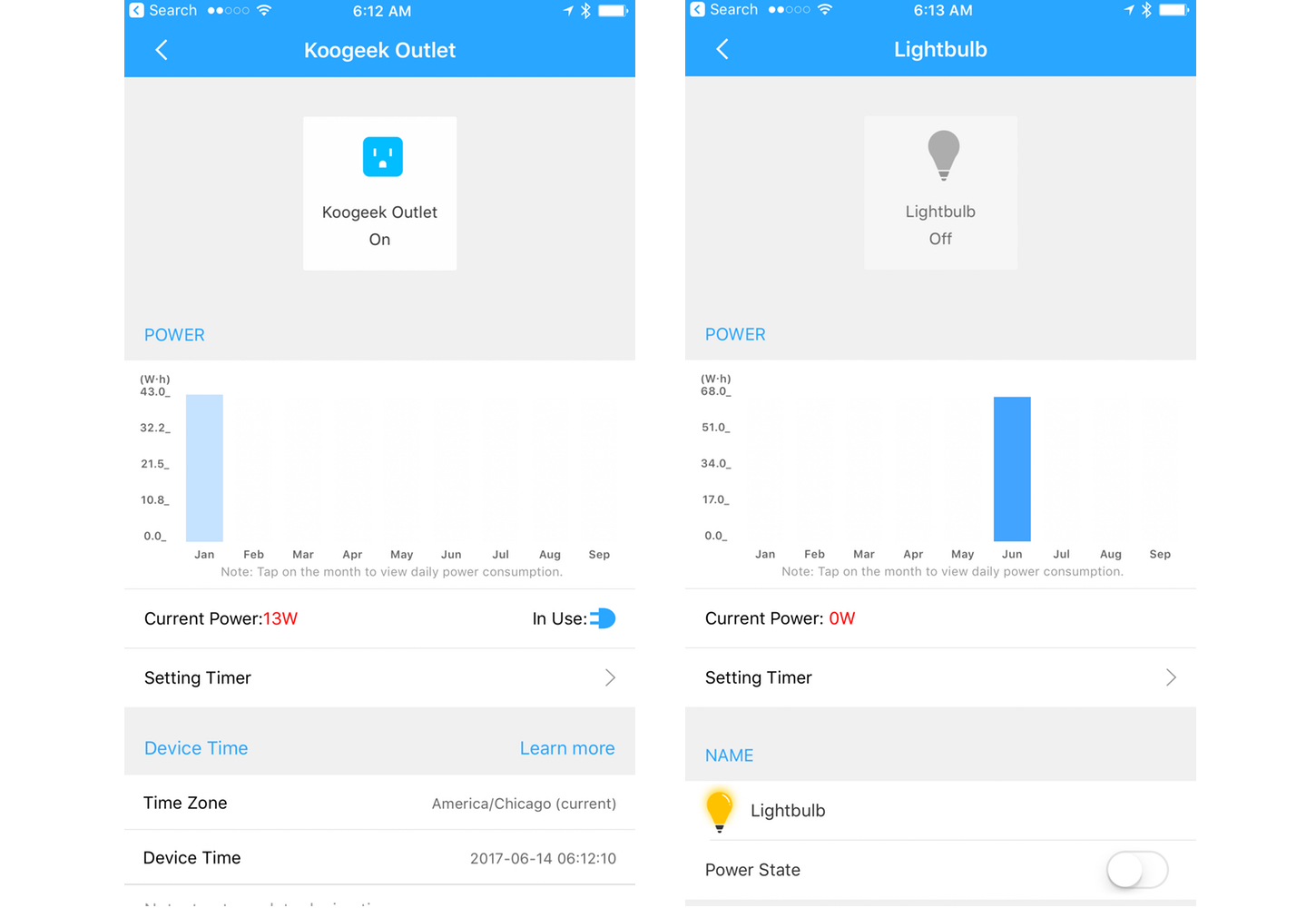Koogeek may not be a name brand that jumps to mind when you think about home automation, but the company has built a substantial lineup of HomeKit-enabled devices. I’ve had a Koogeek smart plug for about a year and recently received a Koogeek lightbulb socket for review. I’m fairly new to home automation and have found both products to be a good way to dip your toe into home automation despite some limitations.
Of the two devices, the smart plug is the most versatile because you can use it to power anything you want. The unit is about the same size as an Apple 29W charging brick and comes in black and white. The version I have is the three-prong model that works with North American outlets. Koogeek also sells a plug designed to work with European electrical outlets that I have not tested.
Setup of the smart plug is simple using Koogeek’s free app or Apple’s Home app. In either case, all you need to do is plug in the Koogeek Smart Plug, confirm that its LED is glowing green, and then tap the plus button in either app. Both apps then prompt you to scan a HomeKit setup code to connect to a 2.4 GHz WiFi network. Koogeek helpfully includes the code on the plug, box, and in the manual for easy access. As with most HomeKit devices, that’s all there is to the setup.1
I set up my smart plug using Apple’s Home app and tend to use that app more often than the Koogeek app, mostly because I’m already familiar with it and the Koogeek app’s functionality is largely duplicative of Apple’s Home app. I also like that the Home app lets me schedule turning devices on and off based on sunrise and sunset times, which is great for lighting and something the Koogeek app can’t do. That said, one cool feature that the Koogeek app has that you cannot access from Apple’s Home app is monitoring electrical usage. I don’t use the feature often, but it’s interesting to tap the ‘Details’ button in the Koogeek app to see how much electricity I’ve been using with the lamp I have plugged into my smart plug.
The Koogeek smart socket works the same way as the smart plug, but is more limited in its functionality because it’s designed for lightbulbs only. The smart socket screws into a light socket and then a lightbulb screws into it. Other than that, the setup process is the same as with the smart plug. With the smart socket, it’s particularly nice that the network setup code is printed on the box and in the manual because it can be hard to access the code after the socket is screwed into a lamp or other light fixture.
There are a couple downsides to each device. The smart plug is just chunky enough that when I plugged it into a power strip beneath my desk to control a lamp, it used one outlet and blocked another. The smart socket suffers from a similar problem in certain circumstances. The socket is 74.5mm tall and 64.5mm wide, which is enough to make it a tight fit for some light fixtures. I initially installed the smart socket in a floor lamp with an open top, which worked fine. Later, I tried the socket in a recessed ceiling fixture above my back door, which also worked, but with very little room to spare. Another consequence of its bulk is that the smart socket is not something you would probably want to put in a light fixture where it can be seen.

The smart socket works best where it can’t be seen, especially when paired with an equally chunky LED bulb.
Another limitation of both products is that they are HomeKit-only. You cannot control either with an Amazon Echo or Google Home. That’s not a show-stopper for me personally, but it is if you’ve consolidated your home automation devices around the Echo or Home.
I’ve moved into home automation slowly and cautiously as I’ve watched friends juggle competing standards and incompatible devices. In the past year, I’ve felt that HomeKit has gained enough traction that I’ve been willing to start incorporating a few items into my home.
Of the two Koogeek products I’ve tried, the smart socket has been the most useful so far because I installed it in a light fixture above my back door. If I’m away all day and come home after dark, I no longer have to fumble to get my house key into the door lock because the light comes on every day at sunset and turns itself off the next morning. It’s a small thing, but it makes a difference if it’s cold or rainy outside.
The smart plug is connected to a floor lamp in my basement workspace. It’s nice to have if I forget to turn the lamp off when I’m finished working. I no longer need to trudge back down the steps to turn it off, but it’s just one lamp, which got me thinking. What if I had a motion sensor and outfitted the rest of the basement lighting with Philips Hue bulbs that turned everything on as soon as I stepped on the stairs? It makes a lot of sense for a part of our house that isn’t constantly occupied by someone, but it’s also the type of geeky slippery slope that gets out of hand fast. Still, it would be nice…
The Kookgeek Smart Plug is available from Amazon in the United States, Canada, and Japan. The European version is available from Amazon in France, Germany, Spain, and Italy. The Koogeek Smart Socket is available from Amazon in the United States, Canada, Japan, the United Kingdom, France, Germany, and Italy.
- There are also physical on/off buttons on the smart plug and smart socket that are handy if you have network trouble and want to switch one off manually. ↩︎



